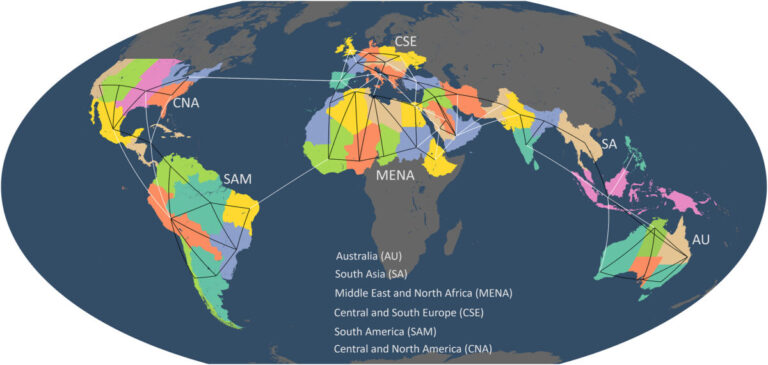New research from Sweden has shown that building global super councils on different continents could not necessarily lead to increased investments in solar energy. The scientists outlined the One Sun One World One Grid (OSOOWOG) concept, which argues for the development of a worldwide super roster for 18 time zones.
Researchers from the Chalmers University of Technology in Sweden have investigated how a worldwide Power Grid About America, Europe, the Mena region, South -Asia, Southeast -Asia and Oceania can Effective the integration of solar energy and shipping clean energy worldwide at all times.
‘The Green Grids – One Sun One World One Grid (Osowog) initiative is planned to have three phases, “said the main author of the investigation, Xiaoming Kan, said PV -Magazine. “In the first phase, the Indian Electricity Grid will be connected to the rasters in South and Southeast Asia and the Central East. In the second phase, this schedule will be connected to African regions with abundant resources for renewable energy. Finally, the third phase will complete a worldwide, interconnected network that is accessible to all countries. “
Can also explain that A Worldwide raster that connects the whole world is an ambitious concept that requires unprecedented levels of international cooperation, coordination and trust. “Given the current geopolitical tensions, such as commercial disputes and regional conflicts, the feasibility of a worldwide super graster remains uncertain,” he added. “These tensions can hamper cooperation and make negotiations on cost distribution, administrative structures and operational frameworks more difficult.”
However, geopolitical factors could also act as a catalyst for the development of super councils in specific contexts, in particular in regions with strong geopolitical alliances and favorable political circumstances. “For example, the transmission grilles of countries within the EU are already interconnected,” explained. “In general, creating super -scheduling connections between neighboring countries with strong relationships is probably more feasible than connecting countries that require cooperation from multiple intermediary countries.”
In the study “Hazing the eternal sun: promotes a global super grid The use of solar energy?“Published in Reviews for sustainable and sustainable energyThe research team explained that A worldwide super roster cannot serve as an efficient solution for the management of the variability of solar energy production, mainly due to the high costs related to transmissions. In general, battery storage offers a more cost-effective solution for tackling the variability of solar energy, while the expansion of the grid appears to be more effective for the management of the variability of wind energy, the papers notes.
“Moreover, the impact of grid extension on the share of wind and solar energy in the electricity supply mix decreases when the system absorbs a significant part of the shipable power generation, such as nuclear energy,” said Kan. “This is particularly relevant for many developing countries, where electricity generation is still dominated by fossil fuels. Moreover, the use of solar PV is often powered by various factors, including national climate policy, government stimuli and energy security goals. As such, a substantial growth of PV installations on solar energy can occur, regardless of the availability of a worldwide super roster. “
The researchers discovered that such a grid can lower the costs of the electricity system by 1.2%and 6.5%, with the average value of 3.8%. They also discovered that it can reduce investments in solar energy, even with transmissions of 18 time zones. “These results indicate that a worldwide super roster“ Just as Osowog has in mind, may not be an efficient tool to stimulate the use of solar energy, “they said. “The economic benefits of the global Super Grid extension of the OSOOWOG initiative seem to be quite limited.”
This content is protected by copyright and may not be reused. If you want to work with us and reuse part of our content, please contact: editors@pv-magazine.com.


